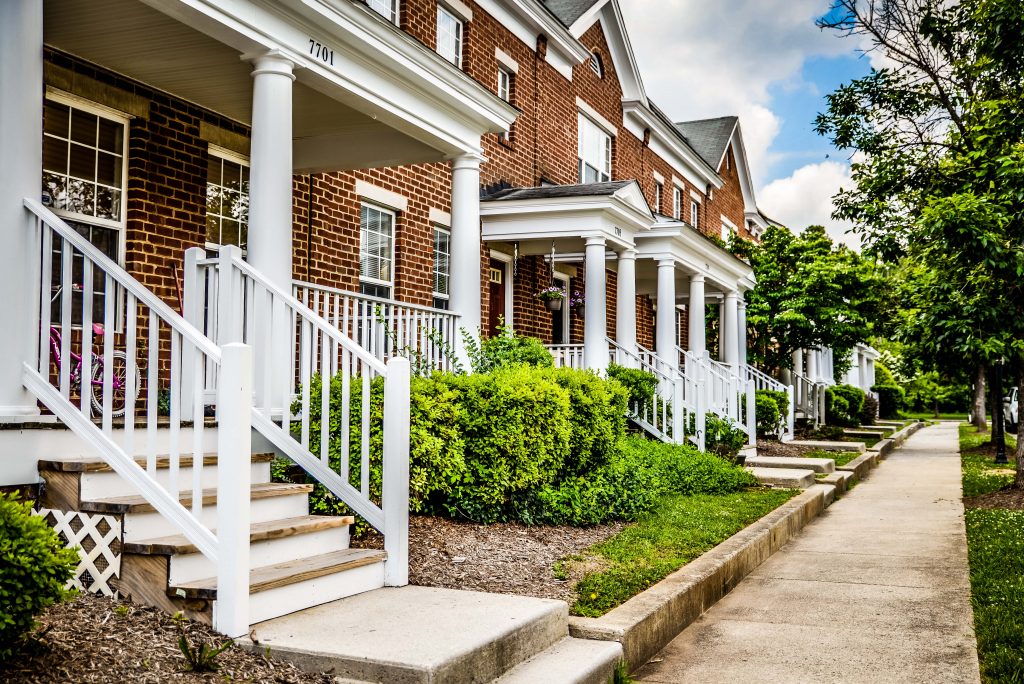High-quality housing is how we make a difference
As Richmond’s largest not-for-profit community development corporation, BHC has revitalized several historic neighborhoods and developed new ones in Richmond, Chesterfield, Henrico and Petersburg. Our portfolio includes the development and operation of 15 multi-family rental communities – eight of which are for low-wealth seniors – with 1,500 rental units, and 200 new or renovated single-family homes built (or renovated) and sold to first-time home buyers.
One of BHC’s primary focuses is on building, renovating or restoring high-quality, affordable, well-located properties. We develop sustainable communities that are attractive, environmentally friendly, well-maintained, professionally managed by our own property management division and service-enhanced to meet the needs of the community.
Mixed-Income, Mixed-Use Model
Affordable homes and apartments coupled with market-rate housing can accelerate a community’s rebirth into a healthy, self-sustaining, mixed-income neighborhood.
How is BHC able to offer mixed-income properties?
The reason BHC is able to offer reduced rents is due to an incentive called the Low-Income Housing Tax Credit (LIHTC). The Tax Reform Act of 1986 created LIHTC, and the program regulations exist under Section 42 of the Internal Revenue Code. Congress intended that the credit would encourage the development of affordable housing through the construction of new housing units or rehabilitation of existing ones.
All units in an apartment may not be available under Section 42 guidelines and could be priced at the market rate rents (rates that are determined by comparable apartment communities in that area).
What is a mixed-use property?
Mixed-use development is an example of flexible zoning which allows various types of land uses, including office, commercial, residential, and in some cases, light industrial or manufacturing, to be combined within a single development or district.
What are the benefits of mixed-use properties?
Mixed-use zoning allows a balanced mix of office, commercial, and residential uses in close proximity to increase convenience to residents and reduce the number of shopping and/or commuting trips needed.
Mixed-use projects can create new housing opportunities in areas that may have previously allowed only commercial, office, or light industrial uses. They can help to revitalize distressed neighborhoods by creating a sense of community and safety.
By making projects mixed-income as well, residents of lower means are able to share the benefits and amenities of the property, especially if it’s located in a desirable area.
Source: United States Department of Housing and Urban Development
Neighborhood Restoration
Affordable means beautiful as well. For change for the better to last, affordable housing must be architecturally appropriate for the community and have the curbside appeal of attractive market-rate housing. BHC takes a thorough yet flexible approach on several fronts.
Identify what works best
Each community’s needs are distinct. When the availability of real estate in a neighborhood presents us with an opportunity, we consult residents for their thoughts and ideas to determine the best course of action. Collaboration with current residents is a routine practice that results in better solutions.
New homes, apartments, and other buildings
When we have vacant land or structures too dilapidated to resurrect, we build new houses or multi-family residences that fit the character of their surroundings. The design of every new and refurbished BHC home is developed to fit beautifully into its particular neighborhood, yet built to today’s highest standards.
Renovation
If a property is structurally sound, we rehabilitate it. Working with what’s already there is the greenest way to renew a blighted community and to help it maintain its unique character.
Adaptive-reuse
If we can convert a commercial or manufacturing building into a new use to meet a housing need, or refurbish it to bring commercial and retail activity back to a neighborhood, we do it.
Prioritizing Sustainability
Green building benefits the environment, the community, and the monthly budget
All housing, including affordable housing, should be built in a way that minimizes its impact on the environment, both during construction and after. When green refurbishing and building practices also make a home healthier and more affordable to live in, that home helps to sustain itself – and by extension, its neighborhood.
Eco-smart materials and building practices
At every opportunity, we use eco-smart materials in BHC homes for lower environmental impact. Many of our homebuilding materials and furnishings fit this description. The use of low-VOC (volatile organic compounds) carpet and paint help to ensure healthy air quality. And landscaping with drought-resistant native plants minimizes water usage.
Energy-efficient designs
Installing energy-efficient heating and cooling systems and energy-efficient windows and lighting are standard practice for BHC homes. So, too, is the use of durable cement-board siding. Reduced energy usage means reduced utility bills for us, our homeowners and residents.
